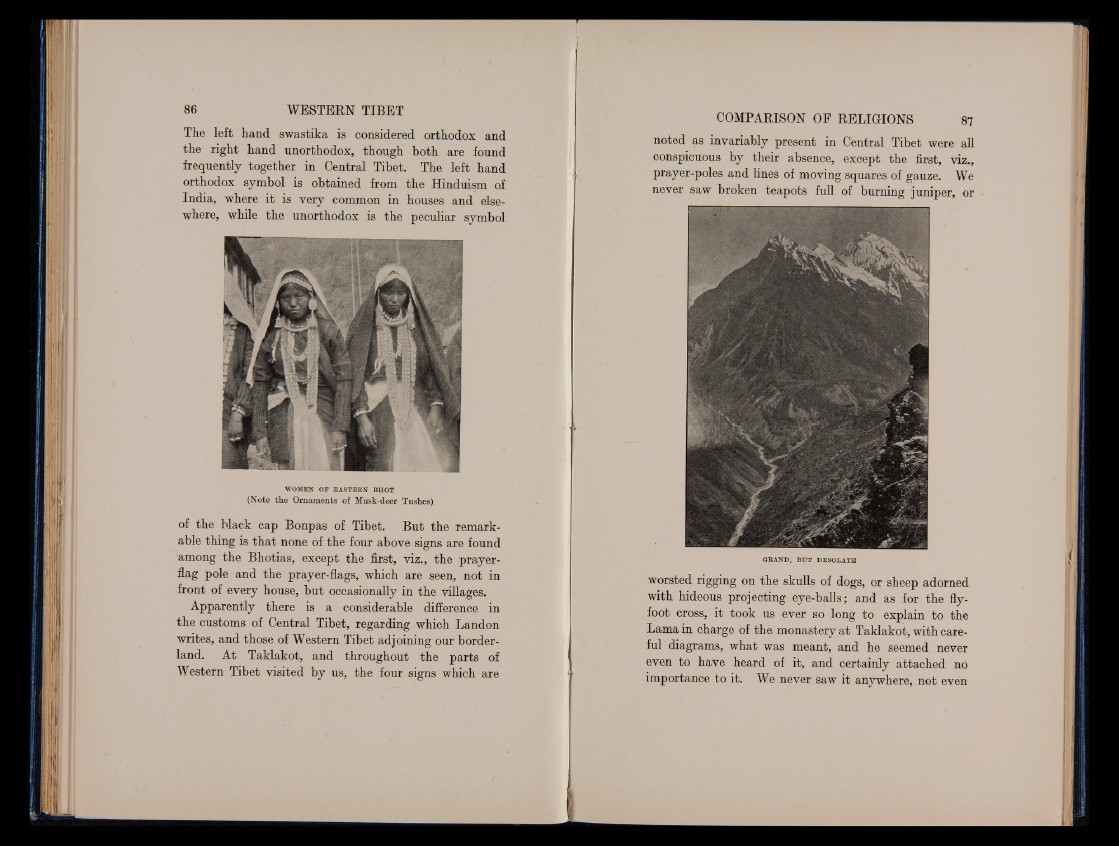
The left hand swastika is considered orthodox and
the right hand unorthodox, though both are found
frequently together in Central Tibet. The left hand
orthodox symbol is obtained from the Hinduism of
India, where it is very common in houses and elsewhere,
while the unorthodox is the peculiar symbol
WOMEN OF EASTERN BHOT
(Note the Ornaments of Musk-deer Tushes)
of the black cap Bonpas of Tibet. But the remarkable
thing is that none of the four above signs are found
among the Bhotias, except the first, viz., the prayer-
flag pole and the prayer-flags, which are seen, not in
front of every house, but occasionally in the villages.
Apparently there is a considerable difference in
the customs of Central Tibet, regarding which Landon
writes, and those of Western Tibet adjoining our borderland.
At Taklakot, and throughout the parts of
Western Tibet visited by us, the four signs which are
noted as invariably present in Central Tibet were all
conspicuous by their absence, except the first, viz.,
prayer-poles and lines of moving squares of gauze. We
never saw broken teapots full of burning juniper, or
GRAND, BUT DESOLATE
worsted rigging on the skulls of dogs, or sheep adorned
with hideous projecting eye-balls; and as for the fly-
foot cross, it took us ever so long to explain to the
Lama in charge of the. monastery at Taklakot, with careful
diagrams, what was meant, and he seemed never
even to have heard of it, and certainly attached no
importance to it. We never saw it anywhere, not even